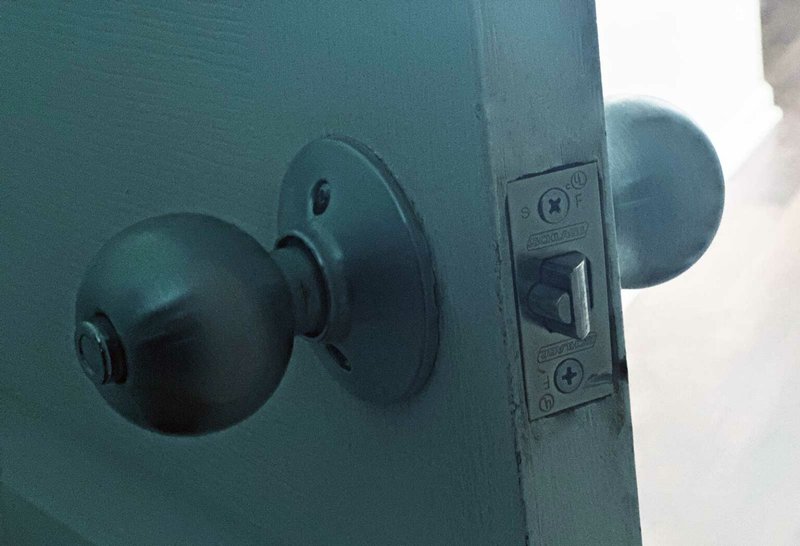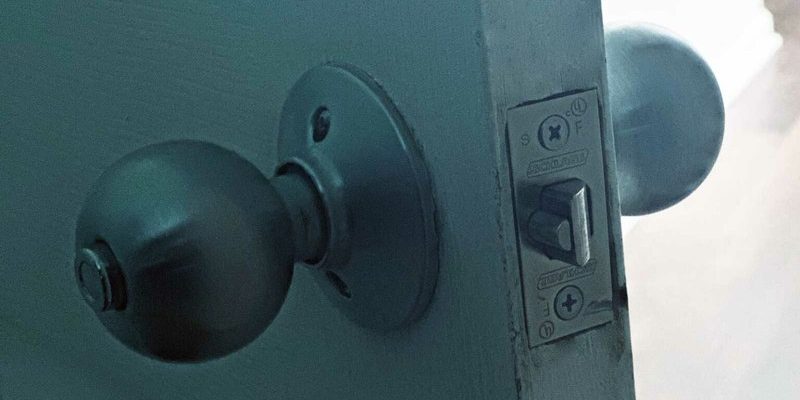
Whether it’s an old-fashioned door with a knob that has seen better days or a newer model that’s just a little too finicky, understanding the issue can save you time and hassle. You might be wondering why this happens and how to fix it without calling a professional. Don’t worry, I’ll walk you through it step by step. Let’s get into the meat of troubleshooting your door knob.
Common Causes of a Door Knob That Requires Multiple Turns
A door knob that demands extra turns to latch can stem from a few different culprits. Understanding these can make your troubleshooting much easier.
First off, it could be a matter of alignment. If your door isn’t aligned correctly within its frame, the latch might not meet the strike plate properly. This misalignment can cause you to turn that knob more times than necessary. Think of it like trying to fit a square peg in a round hole—it just won’t work without a little adjusting.
Another common issue can be the knob and latch mechanism itself. Over time, dirt and grime can build up in the mechanism, making it sluggish. Imagine trying to run a race with a heavy backpack; it’s doable, but it’s going to take a lot more effort!
Lastly, the internal components of the door knob could be worn out. If the springs or the latch are getting older, they may not function as smoothly as they once did. This wear and tear can lead to the knob needing multiple turns to engage properly.
Step-by-Step: Checking Alignment
Let’s start with the alignment of your door. This is often the quickest fix and can sometimes solve the problem right away.
1. Inspect the Door Fit: Close the door slowly and watch how it lines up with the frame. If there’s a noticeable gap or if it seems to hang unevenly, that’s a sign you’ll need to adjust the hinges or the latch plate.
2. Adjust the Hinges: If your door is sagging, you might need to tighten the screws on the hinges or add a washer to elevate the door slightly. This can help the strike plate align better with the latch.
3. Test the Latch: After adjusting, close the door again and see if the latch engages more easily. You might find that a simple tweak can save you from turning that knob multiple times.
Checking the alignment is like finding that sweet spot on a comfy couch. Once it’s right, everything else should fall into place.
Clean and Lubricate the Mechanism
If alignment isn’t the issue, the next step is to clean and lubricate the door knob mechanism. Here’s how to do it effectively:
1. Remove the Door Knob: Most knobs are held in place by a couple of screws. Use a screwdriver to take them off. Keep track of the screws—you don’t want to lose them!
2. Clean the Parts: Use a cloth to wipe down the interior of the knob and the latch. A small brush, like an old toothbrush, can help remove any debris stuck in the mechanism.
3. Lubricate: After cleaning, it’s time to apply a lubricant. Choose a silicone-based spray or lighter oil. Avoid using grease, as it can attract dirt. A few drops on the moving parts should do the trick!
After putting everything back together, give it a test. You should notice an immediate improvement in how smoothly the door latches.
Checking Internal Components for Wear
If your door knob still acts up, it’s possible the internal components need replacing. This might sound daunting, but it’s often simpler than you think.
1. Inspect the Internal Parts: After removing the knob, check the latch and the spring inside. If either looks worn, this is likely causing your troubles. You might notice that the latch doesn’t spring back as it should.
2. Replace Parts if Necessary: Many hardware stores sell replacement parts for door knobs. Bring the old parts with you to find the right fit. Replacing the parts can rejuvenate your door knob and save you from constant repairs.
3. Reassemble and Test: Once you have replaced any broken components, put everything back together. It’s like giving your door knob a fresh start!
Consider the Age of Your Door Knob
Sometimes, age can be a significant factor. If your door knob is several years old, it might be time for an upgrade. Old door knobs can become finicky, and newer models often have better mechanisms.
1. Evaluate the Condition: Look at how the door knob feels overall. Does it stick? Do you notice rust or discoloration? If it’s an older knob, a replacement could be the best solution.
2. What to Look for in a New Knob: When shopping for a new door knob, consider options with anti-corrosion mechanisms or smooth latch systems. These features can enhance durability and ease of use.
3. Installation Tips: Installing a new knob is usually straightforward. Most come with a guide. Just remember to keep everything aligned when installing, or you might end up back at square one!
When to Call a Professional
If you’ve tried all these steps and the door knob still requires multiple turns, it might be time to consider professional help.
1. Complex Issues: Sometimes, the problem lies deeper within the door frame, or the strike plate may need adjusting beyond what a DIY project can handle. It can feel overwhelming, but that’s where a skilled handyman can save the day.
2. Avoiding Damage: If you’re not comfortable taking apart your door knob or if the door is particularly old or valuable, hiring a pro can prevent accidental damage that could lead to bigger problems later.
3. Cost vs. Time: Think about the amount of time spent troubleshooting versus the cost of a professional. Sometimes it’s worth investing in help to restore your peace of mind.
Final Thoughts
A door knob that requires multiple turns to latch can be both inconvenient and irritating. However, with some basic troubleshooting—like checking alignment, cleaning the mechanism, and looking for wear—you can often fix the problem yourself. In the end, whether you choose a DIY approach or call in the experts, ensuring your door operates smoothly is key to feeling at home in your space.
By understanding the potential issues and solutions, you’re well-equipped to tackle this pesky door knob problem. Remember, it’s just one small part of your home, but it plays a big role in your daily life. Happy fixing!
